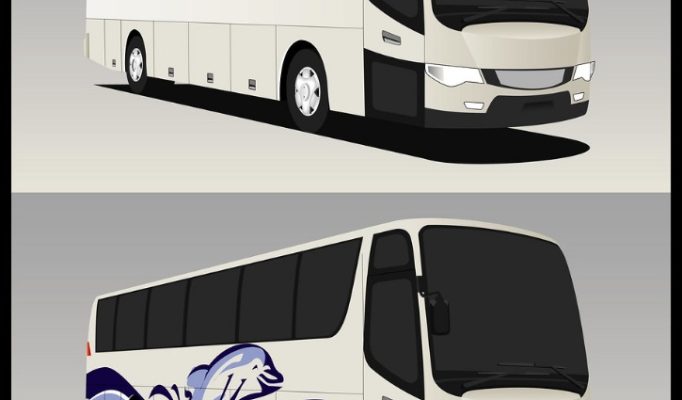Fundamentals of Engineering and Graphic Design
Engineering and graphic design are two dynamic fields that blend creativity and technical skill to solve complex problems and communicate ideas effectively. Fundamentals of Engineering provide the foundational knowledge necessary to innovate and develop practical solutions, while Graphic Design focuses on visual communication, utilizing artistry and technology to convey messages clearly and compellingly. Together, these disciplines form a vital part of modern industries, fostering innovation and inspiring visual storytelling.
Core Principles of Engineering
Engineering and graphic design are both essential disciplines that rely on core principles to achieve effective problem-solving and visual communication. The Fundamentals of Engineering emphasize the importance of applying scientific and mathematical principles to create functional and innovative solutions. This includes understanding design processes, material properties, and system integration to develop reliable and efficient engineering solutions. Conversely, graphic design focuses on visual communication, emphasizing understanding user needs, aesthetics, and clarity to convey messages effectively. The core principles of engineering involve analysis, creativity, and precision, while graphic design centers around composition, typography, color theory, and visual hierarchy. Both fields require a balance of technical knowledge and creative thinking to produce impactful and meaningful results, highlighting the importance of integrating technical skills with artistic expression for successful outcomes.
Core Principles of Graphic Design
Engineering and graphic design are two distinct fields that intersect through their reliance on fundamental principles and creative problem-solving. Engineering focuses on the development, construction, and functionality of systems and structures, requiring technical expertise and precision. Graphic design, on the other hand, emphasizes visual communication, using elements like typography, color, and layout to convey ideas effectively. Both disciplines uphold core principles such as clarity, balance, and harmony to achieve their respective goals.
The core principles of graphic design include contrast, alignment, repetition, proximity, and hierarchy. Contrast helps to create emphasis and draw attention to important elements; alignment ensures a clean, organized appearance; repetition reinforces branding and consistency; proximity groups related items together for better understanding; and hierarchy guides viewers through content in a logical order. Understanding these principles is essential for creating visually appealing and effective designs.
In the context of engineering, fundamental concepts include safety, efficiency, sustainability, and innovation. Engineers apply scientific and mathematical principles to solve real-world problems, emphasizing functionality and durability. When integrated with graphic design, these principles foster clear communication of complex ideas, technical data, and project proposals, ensuring that both technical and aesthetic aspects work synergistically to achieve successful outcomes.
Intersections Between Engineering and Graphic Design
Engineering and graphic design are two fields that often appear distinct but actually share numerous intersections that drive innovation and creativity. By combining technical expertise with visual communication, professionals in both areas collaborate to create functional, aesthetically pleasing solutions. Exploring these intersections reveals how design principles enhance engineering projects and how engineering concepts inform graphic design processes, ultimately fostering more effective and engaging results across various industries.
Visualization and Technical Communication
Engineering and graphic design intersect in numerous ways, enhancing how complex ideas are communicated and understood. This collaboration leverages visual tools to simplify technical concepts, improve problem-solving processes, and facilitate innovation. Visualization and technical communication serve as critical bridges between these fields, ensuring that technical details are accessible to diverse audiences and stakeholders.
- Visualization techniques such as 3D modeling and computer-aided design (CAD) enable engineers to create detailed representations of projects, making it easier to identify potential issues and optimize designs before construction or manufacturing.
- Graphic design principles are used to produce clear and engaging technical manuals, diagrams, and presentations that improve comprehension and usability of engineering information.
- Effective technical communication helps in multidisciplinary teamwork, ensuring that engineers, designers, and clients share a common understanding and work towards a unified goal.
- The integration of graphic design enhances user experience in product development, from interface design to instructional materials, thereby increasing product efficiency and user satisfaction.
- Visualization tools applied in engineering support data analysis and decision-making, allowing engineers to interpret complex data sets visually and make informed choices.
Design Software and Engineering Tools
Intersections between engineering and graphic design have become increasingly prevalent as both fields leverage digital tools to enhance creativity and precision. Engineers utilize graphic design principles to visualize complex concepts, create detailed schematics, and communicate ideas effectively. Conversely, graphic designers incorporate engineering concepts to develop functional and aesthetically appealing solutions for technical projects. The integration of design software and engineering tools has revolutionized the way professionals collaborate, enabling seamless transitions from conceptual sketches to detailed technical drawings. Advanced design software such as CAD (Computer-Aided Design) and BIM (Building Information Modeling) allows engineers and designers to work within unified platforms, improving accuracy, efficiency, and innovation. This synergy fosters more comprehensive and innovative solutions, supporting everything from product development to architectural planning.
Prototyping and Model Creation
Engineering and graphic design intersect in numerous innovative ways, particularly in the realms of prototyping and model creation. Engineers utilize graphic design principles to visualize complex concepts, making it easier to communicate ideas and facilitate collaboration across teams. Graphic design enhances the clarity of technical drawings and schematics, ensuring precision and understanding. Conversely, engineering provides the foundational knowledge and technical accuracy necessary for effective graphic representations. Prototyping serves as a critical bridge between theory and practice, allowing designers and engineers to create tangible models that can be tested and refined. 3D modeling and digital fabrication tools enable rapid development of prototypes, fostering a seamless integration of aesthetics with functionality. This synergy ultimately accelerates product development, improves design quality, and leads to innovative solutions that are both visually appealing and highly functional.
Applications in Various Industries
Applications in various industries play a crucial role in shaping modern engineering and graphic design practices. These applications facilitate innovative solutions, streamline workflows, and enhance creativity across diverse sectors. From manufacturing to digital media, the integration of advanced tools and software has revolutionized the way professionals approach their projects, leading to increased efficiency and precision. Understanding these applications is essential for professionals seeking to stay ahead in the evolving landscape of engineering and graphic design.
Product Design and Development
Engineering and graphic design play a crucial role in shaping innovative solutions across various industries, particularly in product design and development. The integration of these disciplines enhances the efficiency, functionality, and aesthetic appeal of products, leading to better user experiences and competitive advantages.
- Automotive Industry: Engineering and graphic design collaborate to create safer, more efficient vehicles with appealing aesthetics and advanced features.
- Consumer Electronics: From smartphones to wearable devices, design and engineering ensure that products are both visually attractive and technically sophisticated.
- Medical Devices: Precise engineering combined with ergonomic and intuitive graphic design improves usability and patient outcomes.
- Fashion and Furniture: Innovative product designs fuse aesthetic trends with structural engineering principles for durability and style.
- Industrial Equipment: Engineering ensures functional robustness, while graphic design enhances user interfaces and operator interactions.
In product development, these disciplines work together from concept to manufacturing, ensuring that the final product meets both aesthetic and functional criteria, ultimately driving industry advancements and consumer satisfaction.
Architecture and Interior Design
Engineering and graphic design play a crucial role in shaping applications across various industries, as well as in architecture and interior design. These disciplines enable professionals to create detailed visualizations, enhance functionality, and ensure precision in the development of projects. In industries such as automotive, aerospace, and electronics, engineering graphics facilitate the development of complex components and systems, improving efficiency and innovation. In architecture and interior design, these skills help visualize spaces before construction begins, allowing for better planning, aesthetic refinement, and seamless execution. By integrating engineering principles with graphic design, professionals can communicate ideas more effectively, streamline workflows, and bring innovative concepts to life across diverse sectors.
Automotive and Aerospace Engineering
Engineering and graphic design play a crucial role in the development and innovation within the automotive and aerospace industries. These fields utilize advanced engineering principles combined with sophisticated graphic design techniques to enhance safety, efficiency, and aesthetics of vehicles and aircraft. In automotive engineering, graphic design is essential for creating intuitive user interfaces, branding, and visual communication that improve the overall driving experience. Similarly, aerospace engineering benefits from graphic visualization of complex data, aerodynamic modeling, and design concepts, enabling engineers to optimize performance and safety features. The integration of these disciplines fosters innovation, helping to develop cutting-edge technologies such as electric vehicles, autonomous systems, and modern aircraft that meet the evolving demands of the industry.
Digital Media and Interactive Design
Engineering and graphic design play a vital role in shaping applications across various industries, especially in digital media and interactive design. These fields combine technical skills with creativity to develop innovative solutions that enhance user engagement and operational efficiency.
- In the entertainment industry, graphic design is used to create compelling visual content for movies, video games, and virtual reality experiences, often involving sophisticated digital media tools.
- Advertising agencies leverage engineering principles to develop interactive digital media campaigns that attract and retain customer attention through engaging visuals and responsive interfaces.
- In education, digital media applications powered by graphic design facilitate interactive learning platforms, making complex concepts accessible and engaging for students of all ages.
- The healthcare sector employs engineering-driven digital media solutions such as virtual simulations and interactive interfaces to improve patient education and medical training.
- Architectural visualization and engineering models utilize advanced graphic design techniques to produce accurate and immersive virtual representations of buildings and infrastructure projects.
- These interdisciplinary applications demonstrate how engineering and graphic design collaboratively advance digital media and interactive platforms across industries, fostering innovation and improved user experiences.
Skills and Education
Skills and education are fundamental components in the fields of engineering and graphic design, shaping professional expertise and creative capabilities. A solid educational background provides the theoretical foundation necessary for understanding complex concepts, while practical skills enable individuals to bring innovative ideas to life. Mastery of relevant tools and continuous learning are essential for success in these dynamic industries.
Technical Skills for Engineers
Proficiency in a diverse set of skills and a solid educational foundation are essential for engineers and graphic designers alike. Strong technical skills enable professionals to efficiently translate ideas into tangible outcomes, whether through precise engineering calculations or compelling visual compositions. Engineers should have expertise in Mathematics, Physics, and specialized software such as CAD, CAM, and simulation tools to develop innovative solutions. Meanwhile, graphic designers benefit from mastery of design principles, typography, color theory, and software like Adobe Photoshop, Illustrator, and After Effects. A comprehensive education fosters critical thinking, problem-solving abilities, and familiarity with industry standards, positioning professionals to excel in multidisciplinary projects. Continuous learning and staying current with technological advances are crucial to maintaining expertise in fast-evolving fields like engineering and graphic design.
Creative Skills for Graphic Designers
While engineering and graphic design are distinct fields, there are valuable skills and educational backgrounds that can enhance a graphic designer’s effectiveness, especially when working on projects related to engineering concepts. Creativity plays a vital role in visualizing complex engineering ideas clearly and attractively. Proficiency in graphic design tools such as Adobe Creative Suite, CorelDRAW, and Sketch is essential for developing compelling visuals. A strong foundation in design principles like balance, contrast, and hierarchy ensures that images communicate effectively. Technical skills in 3D modeling and CAD software can also be advantageous for designing detailed engineering graphics. Educationally, a background in graphic design, visual communication, or engineering with an emphasis on technical drawing provides a solid base. Continuous learning through workshops and courses keeps designers updated with innovative techniques, enabling them to craft visuals that accurately represent engineering concepts while remaining visually engaging.
Interdisciplinary Learning and Collaboration
Skills and education in engineering and graphic design play a vital role in fostering innovative solutions and creative problem-solving. A strong foundation in technical knowledge, combined with artistic skills, enables professionals to approach projects with a balanced perspective. Interdisciplinary learning encourages collaboration across these fields, allowing engineers and graphic designers to leverage each other’s expertise, leading to more effective and visually compelling outcomes.
Emerging Trends and Technologies
Emerging trends and technologies are revolutionizing the fields of engineering and graphic design, driving innovation and creativity to new heights. Advances in digital tools, automation, and sustainable practices are shaping the way professionals conceptualize and execute their projects. As these technologies continue to evolve, they offer exciting opportunities for more efficient, precise, and visually compelling solutions in both disciplines.
Augmented Reality (AR) and Virtual Reality (VR)
Emerging trends in engineering and graphic design are significantly shaped by the advancements in Augmented Reality (AR) and Virtual Reality (VR) technologies. These immersive tools are transforming the way professionals conceptualize, visualize, and communicate complex designs and engineering solutions. AR enables engineers and designers to overlay digital models onto real-world environments, allowing for real-time interaction and modifications. Conversely, VR provides a fully immersive experience where users can explore detailed 3D models in a simulated space, improving accuracy and collaborative assessment. Together, AR and VR enhance creativity, streamline workflows, and facilitate more effective client presentations, leading to innovative approaches in the fields of engineering and graphic design.
Artificial Intelligence in Design and Engineering
Emerging trends and technologies are transforming the landscape of engineering and graphic design, with artificial intelligence (AI) playing a pivotal role in driving innovation. AI facilitates more efficient design processes by enabling automated drafting, parametric modeling, and real-time simulations, thereby reducing time and increasing precision. In engineering, machine learning algorithms optimize material selection, structural analysis, and predictive maintenance, leading to safer and more sustainable solutions. Graphic design benefits from AI through advanced image recognition, generative design, and personalized content creation, allowing designers to explore creative boundaries and deliver highly tailored visuals. As these technologies continue to evolve, they foster a collaborative environment where human ingenuity is augmented by intelligent systems, paving the way for groundbreaking advancements in both fields.
3D Printing and Rapid Prototyping
Emerging trends and technologies in engineering and graphic design are significantly transforming the way prototypes are developed and visualized. Among these, 3D printing and rapid prototyping stand out as groundbreaking innovations that enable rapid production of complex models with high precision and customization. These technologies facilitate a faster transition from concept to tangible product, reducing development time and costs. In engineering, 3D printing allows for the creation of functional prototypes, lightweight components, and intricate geometries that would be difficult to manufacture using traditional methods. Similarly, graphic design benefits from rapid prototyping by enabling designers to quickly produce and iterate visual concepts, improving communication and client approval processes. As these technologies continue to advance, they are fostering greater creativity, efficiency, and collaboration across engineering and graphic design disciplines.
Sustainable and Eco-Friendly Design Solutions
Emerging trends and technologies are significantly transforming the fields of engineering and graphic design, fostering innovative solutions and creative approaches. Advanced tools such as 3D printing, augmented reality, and parametric design enable engineers and designers to visualize complex structures and concepts with greater precision and efficiency. These innovations facilitate rapid prototyping, customization, and improved collaboration across disciplines. Additionally, the integration of artificial intelligence and machine learning is streamlining design processes, optimizing material usage, and enhancing overall project outcomes.
In tandem with technological advancements, there is a growing emphasis on sustainable and eco-friendly design solutions. Engineers and graphic designers are increasingly adopting environmentally conscious materials, energy-efficient systems, and sustainable construction practices to reduce ecological footprints. Green building techniques, renewable energy integrations, and circular design principles are becoming standard considerations in project development. These approaches not only minimize environmental impact but also promote long-term economic and social benefits, aligning creative innovation with responsible stewardship of the planet.





